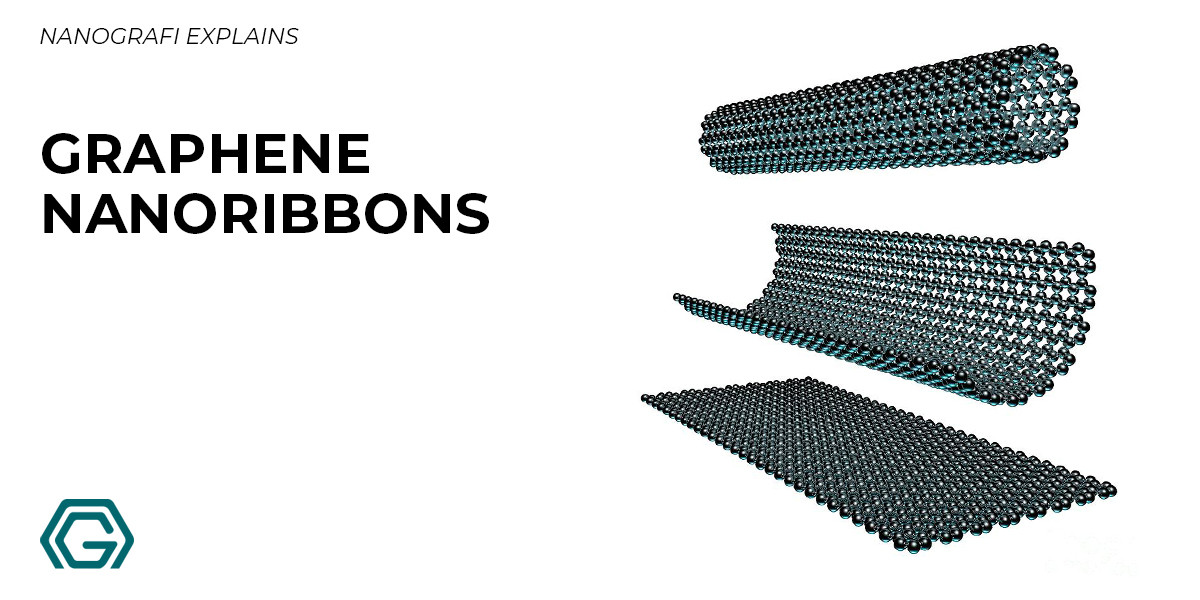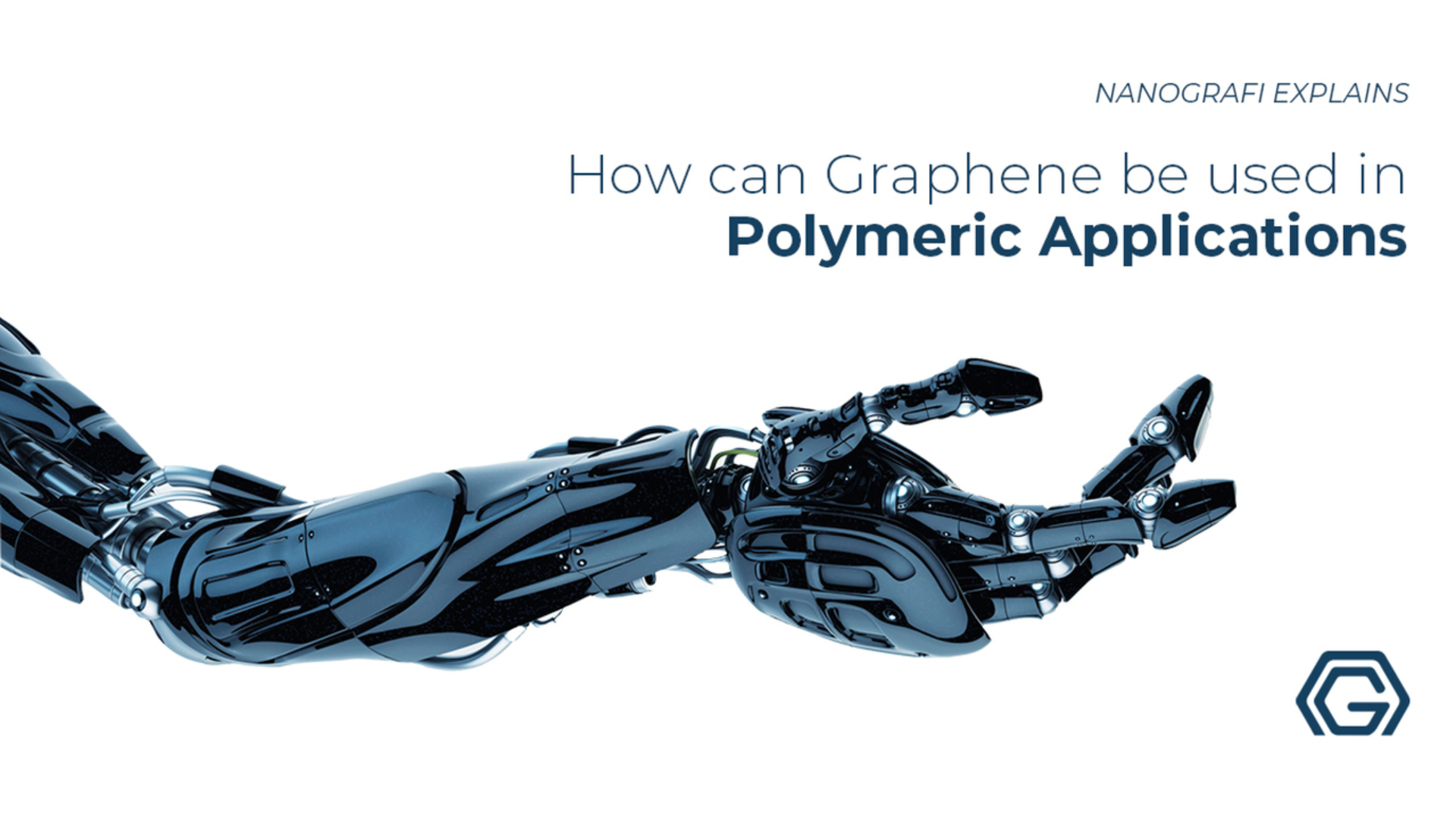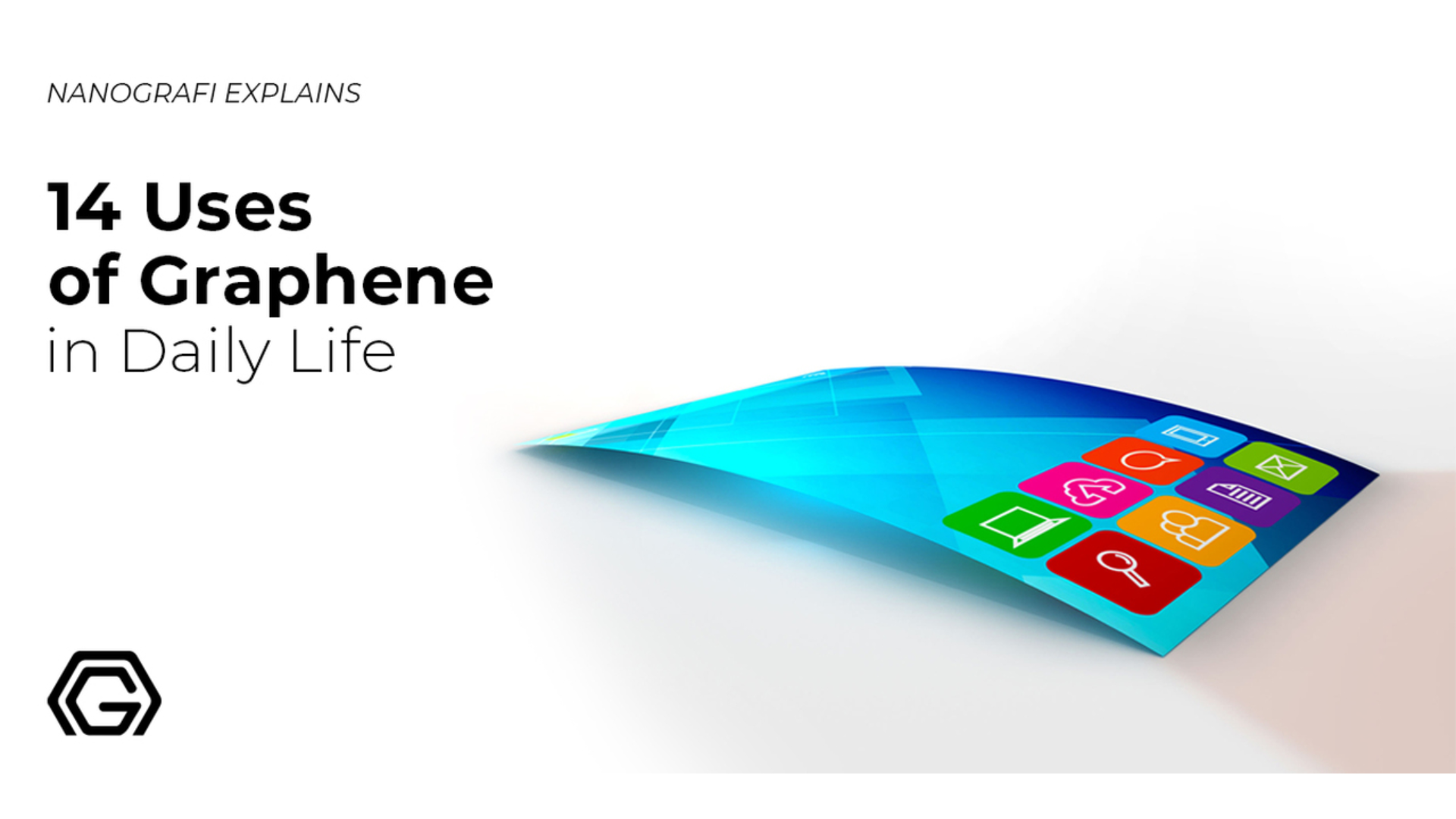Graphene Nanoribbons
Modern nanotechnology is a miracle of science, technology, and engineering and its several different structures have already found their uses in thousands of applications. Graphene nanoribbons are among one of the most famous nanostructures.
The edge magnetism is the most remarkable property of the graphene nanoribbons. At the same time, it is also a very difficult task to preserve edge magnetism. Several techniques have been used in this regard such as preservation through iodine termination, preservation by ethylene termination, preservation by inducing robust and competitive magnetic ordering in graphene nanoribbons, preservation by hydrogen-plasma etching, etc. However, a lot of research is also being conducted to discover other ways to preserve the edge magnetism of the graphene nanoribbons.
Introduction
Nanotechnology is the science, technology, and engineering that deals with nanoscale particles and their different structures such as Nanocomposites, nano fabrics, nanofiber, nanoribbons, etc. It also deals with the potential applications of those nanoparticles and other different nanostructures. Nanotechnology is miraculously useful for mankind and has already found its uses in different applications across several industries.
When we come to know about the wonders of nanotechnology, we strongly second the famous Richard Feynman, who once said, "There is plenty of room at the bottom." He spoke about several different ways to exploit atoms and molecules. As modern technologies continue to develop, nanotechnology is also accelerating, and it has now become the area of intensive research because of the potential uses and advantages of the nanomaterials in a wide variety of potential application
Among several different forms of nanostructures, nanoribbons are also very popular. The strips of graphene less than 50 nm in width are known as graphene nanoribbons. Graphene nanoribbons are also known as nano-graphene ribbons or nano-graphite ribbons. These are planar, finite, quasi-one-dimensional structures of graphene. Mitsutaka Fujita and co-authors first introduced the theoretical model of the graphene nanoribbons. Their purpose of the study was to examine the edge and nanoscale size effects in graphene. Graphene nanoribbons are very popular for their very particular chemical, magnetic, and optical properties.
Graphene produces two very distinct types of edges when it is cut, armchair type, or zigzag type. Both of these types have a nonzero bandgap different from graphene and just like semiconductors. It is extremely important to note that the distinct electronic properties of the graphene nanoribbons depend on the width and angle at which its edges are cut. The most remarkable property of the graphene nanoribbons is the edge magnetism. However, it is very difficult to preserve the edge magnetism of the graphene nanoribbons because of the instability of the ideal zigzag graphene nanoribbons.
The graphene nanoribbons are extremely important nanomaterials, and they have already proved their worth in different industries. They exhibit many coveted properties for spintronics and spin qubit devices along with gate-tuneable carrier concentration, long spin lifetime, and high mobility. They are being used as nano-fillers to improve the mechanical properties of polymeric nanocomposites, hybrid imaging modalities like photoacoustic tomography and thermoacoustic tomography, etc. However, the usability of the graphene nanoribbons depends on the preservation of the edge magnetism. It is important to realize that the geometry and chemistry affect the electronic properties of the graphene nanoribbons and the instability of the edge magnetism is a major drawback. Therefore, it is absolutely imperative to know different methods to preserve the edge magnetism of the graphene nanoribbons. By discovering different preservation methods, we can only unlock the absolute usability of the graphene nanoribbons.
Methods to Preserve The Edge Magnetism of Graphene Nanoribbons
The edge magnetism of the graphene nanoribbons is a unique property of the graphene nanoribbons. However, the preservation of this edge magnetism is a very sophisticated phenomenon. There is an absence of localized d or f electrons, and that is the reason that magnetism does not appear in graphene. Its realization totally depends on specific edge structures. For the preservation of the edge magnetism, the edge sites of the zigzag graphene nanoribbons need the pure sp2 coordination. Generally, hydrogen serves as a terminal group for zigzag graphene nanoribbons for the saturation of dangling bonds. The following are some of the few methods to preserve the edge magnetism of the graphene nanoribbons.
Preservation of Edge Magnetism of The Graphene Nanoribbons by Iodine Termination
Yu Wang and Yafei Li conducted research to discover a reliable method to preserve the edge magnetism of the graphene nanoribbons. They decided to use iodine termination for this purpose. Iodine is an ideal termination group for zigzag graphene nanoribbons according to the first-principles computations. The reason is that iodine can stabilize the pure sp2 coordinated edges more efficiently and effectively. Iodine atoms tend to have a strong steric effect, and their unfavourable sp3 coordination can easily be suppressed. As a result, the pure sp2 coordinated edges can also be easily preserved and stabilized at experimental conditions. By employing Clar's model, the I-terminated zigzag nanoribbons' electronic structure can be rationalized. The iodine terminated zigzag graphene nanoribbons can easily reproduce the magnetic and electronic properties of those hydrogen-terminated nanoribbons. Moreover, it is also very interesting as well as astonishing to note that the iodine termination significantly lowers the critical electric field that is generally needed to induce half-metallic behaviour. This research has been very influential and has open new doors for scientists and researchers to fabricate and exploit it for developing spintronic devices based on the graphene nanoribbons with preserved edge magnetism.
Preservation of Edge Magnetism of the Graphene Nanoribbons by Ethylene Termination
Yafei Li, Zhen Zhou, Carlos Cabrera, and Zhongfang Chen illustrated in a study that C2H4 is the ideal terminal group for zigzag graphene nanoribbons for the preservation of the edge magnetism of the graphene nanoribbons. The ethylene-terminated zigzag graphene nanoribbons with pure sp2 coordinated edges are stabilized at very normal experimental conditions. The ethylene-terminated zigzag graphene nanoribbons can easily reproduce the magnetic and electronic properties of those hydrogen-terminated nanoribbons. By employing Clar's model, the ethylene-terminated zigzag nanoribbons' electronic structure can be rationalized. It is very interesting to note that the enhanced stability of the sp2 coordinated edges of the graphene nanoribbons is provided by the multiple edge hyperconjugation interactions. However, the researchers believe that even pure sp2 termination cannot guarantee the edge magnetism and ethylene termination may also destroy the edge magnetism. Despite the limitations of the study, it certainly paved the way for the zigzag graphene nanoribbons with preserved edge magnetism to find uses in several applications across several industries. The ethylene is a very simple and common organic compound that is regarded as the most exceptional for the preservation.
To get more information about the applications of graphene,
you can read our blog post here.
Preservation of Edge Magnetism of The Graphene Nanoribbons by Ti and V
Chengxi Huang, Haiping Wu, Kaiming Deng, and Erjun Kan conducted research to preserve and also manipulate the edge magnetism properties of the graphene nanoribbons. Under external manipulation, multiple quantum magnetic states are exhibited by materials with competitive spin interactions. By modifying the graphene nanoribbons with Ti and V atomic chains, the resulting nanoribbons show competitive spin interactions and robust spiral magnetism after successful preservation of the edge magnetism. This introduction of the transition metal atomic chain decoration of the graphene nanoribbons for the preservation of edge magnetism is also believed to have spiral magnetic ordering because of spin frustrations. The Néel temperature for Ti- termination and V-termination are 45 and 100 K, respectively. This study is significant in the sense that it not only paved the way to preserve graphene nanoribbons' edge magnetism but also opened doors for further spin-control research.
Preservation of Edge Magnetism of The Graphene Nanoribbons by Hydrogen Plasma Etching
Xiaowei Zhang, Oleg Yazyev, Juanjuan Feng, and co-researchers conducted research to preserve the edge magnetism of the graphene nanoribbons by hydrogen plasma etching. They used a unique combination of high-resolution scanning tunnelling microscopy and first-principle calculations for this study. The research highlights the exact atomic structure of hydrogen plasma etched graphene nanoribbons' edges. It also sheds light on the chemical nature of terminating functional groups of chiral edge, armchair, and zigzag orientations. The hydrogen plasma etched graphene nanoribbons' edges are generally flat and free of structural reconstructions. Furthermore, no further rehybridization of the outermost carbon edge atoms is also not present after the termination by hydrogen atoms. It was an interesting, intriguing, and also comprehensive study that highlighted different aspects of the area of research and paved the way for further similar researches.
Preservation of Edge Magnetism of The Graphene Nanoribbons by Free-Career Doping
Shiyuan Gao and Li Yang have proved through their research that free-career doping can overcome the challenge of preservation of the edge magnetism of graphene nanoribbons. They came to the conclusion that free-career doping is phenomenal to realize ferromagnetism and half-metallicity in graphene nanoribbons of general types of edge structures.
Preservation of Edge Magnetism of The Graphene Nanoribbons by Hydrogen Termination
There are two types of hydrogen terminations that are used for the preservation of the edge magnetism of the graphene nanoribbons, with the termination of one o two hydrogen atoms terminating the outermost carbon atom or atoms. In the first type, the terminated carbon atoms have sp2 hybridization and thus play a role in the electron network of graphene. The edge carbon atoms assume sp3 hybridization when two carbon atoms are terminated. In this case, they do not play a role in the electron network of graphene. Both of these methods give edge states that are localized on only one of the sublattices of graphene. However, in each case, the sublattice is different.
To get more information about the uses of graphene,
you can read our blog post here.
Conclusion
New developments in the field of nanotechnology have been exceptional in recent years. Graphene nanoribbons are the most phenomenal inventions of modern nanotechnology. Graphene nanoribbons exhibit many properties that are most coveted by several applications across several industries, and the most important property of graphene nanoribbons is the edge magnetism. Its properties, however, are totally dependent on the edge magnetism. Edge magnetism of the graphene nanoribbons is not stable, and that demands to preserve it. Therefore, it is absolutely imperative to preserve the edge magnetism of the graphene nanoribbons. However, it is not an easy phenomenon and needs a lot of research to master it. There are several techniques such as preservation through iodine termination, preservation by ethylene termination, preservation by inducing robust and competitive magnetic ordering in graphene nanoribbons, preservation by hydrogen-plasma etching, etc. that have proved successful for the preservation of the edge magnetism of the graphene nanoribbons. However, a lot of research is also being conducted to discover other ways to preserve the edge magnetism of the graphene nanoribbons.
To get more information, you can visit Blografi.
https://link.springer.com/article/10.1007/s00214-014-1548-8
https://cyberleninka.org/article/n/505859/viewer
https://pubs.acs.org/doi/10.1021/acs.jpcc.6b10883
https://pubs.acs.org/doi/10.1021/nn303730v
https://www.nature.com/articles/srep02030
https://www.nanowerk.com/spotlight/spotid=31128.php
Recent Posts
-
Nanocomposites in Food Packaging
The utilization of nanocomposites in food packaging represents a significant advancement in the fiel …19th Apr 2024 -
What is the Difference Between 7075 and 6061 Aluminum Alloy?
When comparing 7075 aluminum alloy to 6061 aluminum alloy, it's essential to understand their disti …5th Apr 2024 -
Iron-Air Batteries: The Ultimate Guide
Iron-air batteries represent a significant breakthrough in energy storage technology, offering a sus …29th Mar 2024







